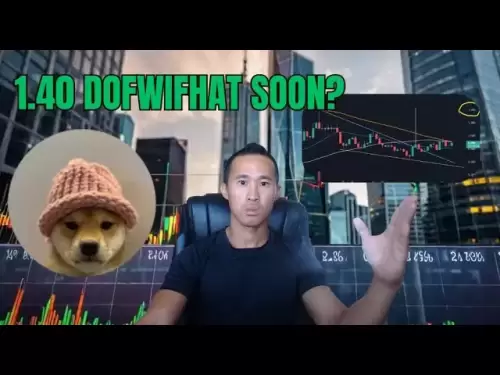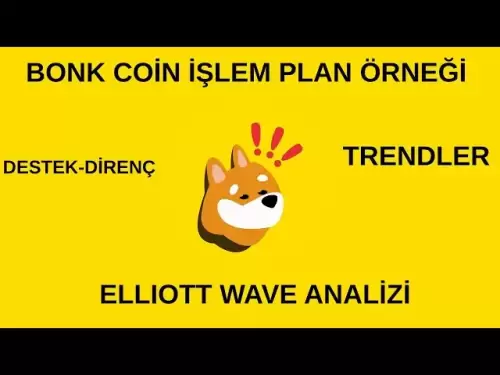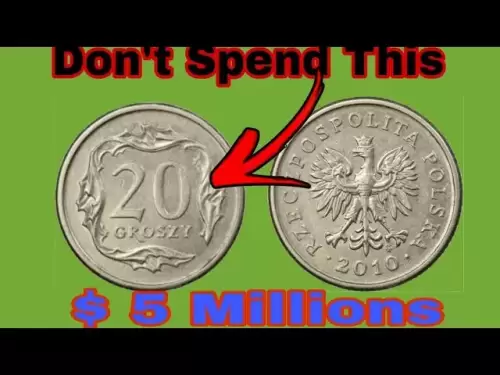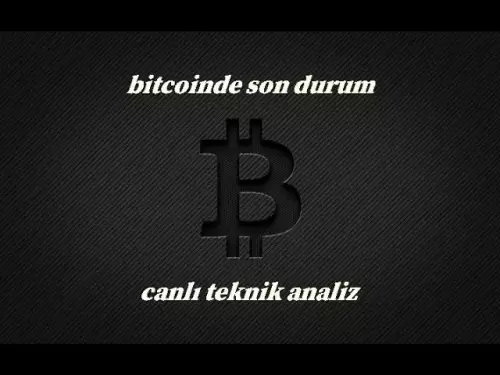-
 Bitcoin
Bitcoin $108,562.4295
0.46% -
 Ethereum
Ethereum $2,533.9553
1.52% -
 Tether USDt
Tether USDt $1.0002
-0.01% -
 XRP
XRP $2.2542
2.23% -
 BNB
BNB $662.4567
1.48% -
 Solana
Solana $151.4114
3.48% -
 USDC
USDC $0.9999
0.00% -
 TRON
TRON $0.2860
0.91% -
 Dogecoin
Dogecoin $0.1685
3.72% -
 Cardano
Cardano $0.5809
1.63% -
 Hyperliquid
Hyperliquid $39.2916
1.85% -
 Sui
Sui $2.8874
0.85% -
 Bitcoin Cash
Bitcoin Cash $496.5801
2.72% -
 Chainlink
Chainlink $13.3582
2.48% -
 UNUS SED LEO
UNUS SED LEO $9.0279
0.07% -
 Avalanche
Avalanche $18.0773
2.30% -
 Stellar
Stellar $0.2426
3.05% -
 Toncoin
Toncoin $2.9086
6.01% -
 Shiba Inu
Shiba Inu $0.0...01170
2.97% -
 Hedera
Hedera $0.1587
3.47% -
 Litecoin
Litecoin $87.4596
1.13% -
 Monero
Monero $317.0425
0.73% -
 Polkadot
Polkadot $3.3778
1.90% -
 Dai
Dai $0.9999
-0.01% -
 Ethena USDe
Ethena USDe $1.0001
-0.01% -
 Bitget Token
Bitget Token $4.4095
0.63% -
 Uniswap
Uniswap $7.3593
6.80% -
 Pepe
Pepe $0.0...09910
3.64% -
 Aave
Aave $274.7388
2.68% -
 Pi
Pi $0.4607
0.48%
How to adjust positions when UNI's implied volatility suddenly increases?
When UNI's implied volatility spikes, adjust your trading positions strategically to manage risk and capitalize on opportunities, using tactics like rolling options and adding hedges.
Apr 26, 2025 at 03:42 pm

When the implied volatility of UNI (Uniswap's native token) suddenly increases, it can significantly impact your trading positions. Adjusting your positions effectively in such scenarios requires a strategic approach to manage risk and potentially capitalize on the increased volatility. This article will guide you through the steps and considerations necessary to adjust your UNI positions when faced with a sudden spike in implied volatility.
Understanding Implied Volatility
Implied volatility is a critical metric in options trading, representing the market's forecast of a likely movement in an asset's price. When UNI's implied volatility suddenly increases, it suggests that traders expect larger price swings in the near future. This can be due to upcoming events, market sentiment shifts, or other factors influencing UNI's price.
To effectively adjust your positions, you must first understand how implied volatility affects options pricing. Higher implied volatility leads to higher option premiums, as the potential for larger price movements increases the value of the option. This can be both an opportunity and a risk, depending on your current positions.
Assessing Your Current Positions
Before making any adjustments, evaluate your current positions in UNI. Are you holding long or short positions in UNI options? Are you using UNI as part of a broader portfolio strategy? Understanding your exposure to UNI is crucial for deciding how to adjust your positions.
- Long positions in UNI options: If you hold call or put options on UNI, an increase in implied volatility can increase the value of these options. However, it also increases the risk of significant price movements against your position.
- Short positions in UNI options: If you have sold options on UNI, higher implied volatility can lead to higher potential losses, as the options you sold become more valuable to buyers.
Strategies for Adjusting Long Positions
If you hold long positions in UNI options, consider the following strategies to adjust your positions in response to increased implied volatility:
Rolling up and out: If you believe the price of UNI will continue to rise, you can roll your options up to a higher strike price and out to a later expiration date. This can help you capture more potential upside while managing the increased cost due to higher implied volatility.
- Go to your trading platform and select the option to roll your position.
- Choose a higher strike price and a later expiration date.
- Confirm the transaction and monitor the new position.
Selling part of your position: To reduce risk, you can sell a portion of your long options to lock in some profits and reduce your exposure to the increased volatility.
- Navigate to your trading platform and select the options you wish to sell.
- Enter the quantity you want to sell and confirm the transaction.
- Monitor the remaining position and adjust as necessary.
Adding protective puts: If you are concerned about a potential downside, you can purchase put options to hedge your long position in UNI.
- Identify the appropriate put options with a strike price that provides the desired level of protection.
- Execute the purchase of the put options on your trading platform.
- Monitor both your long position and the protective puts.
Strategies for Adjusting Short Positions
If you have short positions in UNI options, consider these strategies to manage the increased implied volatility:
Rolling down and out: If you believe the price of UNI will decrease, you can roll your short options down to a lower strike price and out to a later expiration date. This can help you manage the increased risk due to higher implied volatility.
- Access your trading platform and select the option to roll your position.
- Choose a lower strike price and a later expiration date.
- Confirm the transaction and monitor the new position.
Buying back part of your position: To reduce potential losses, you can buy back a portion of your short options to close out some of your exposure.
- Go to your trading platform and select the options you wish to buy back.
- Enter the quantity you want to buy back and confirm the transaction.
- Monitor the remaining position and adjust as necessary.
Adding covered calls: If you own UNI tokens, you can sell call options against your holdings to generate income and offset some of the risk from your short options.
- Determine the appropriate strike price and expiration date for the covered calls.
- Execute the sale of the call options on your trading platform.
- Monitor both your short position and the covered calls.
Monitoring and Adjusting Continuously
Continuous monitoring is essential when dealing with increased implied volatility. Market conditions can change rapidly, and staying informed allows you to make timely adjustments to your positions.
- Set up alerts: Use your trading platform to set up price and volatility alerts for UNI. This will help you stay informed about significant changes that may require further adjustments.
- Review market news: Stay updated on news and events that could impact UNI's price and implied volatility. This includes regulatory changes, platform updates, and broader market trends.
- Reassess your strategy: Regularly reassess your trading strategy in light of new information and market conditions. Be prepared to make further adjustments as needed to manage risk and capitalize on opportunities.
Using Volatility Products
In addition to adjusting your options positions, you can also consider using volatility products to manage your exposure to UNI's implied volatility. These products, such as volatility index (VIX) futures or options, can help you hedge against increased volatility.
VIX futures: If you expect UNI's implied volatility to remain high, you can buy VIX futures to profit from increased market volatility.
- Access a futures trading platform and select VIX futures.
- Choose the appropriate contract and execute the purchase.
- Monitor the position and adjust as necessary.
VIX options: You can also use VIX options to hedge your UNI positions. Buying VIX call options can provide protection against a sudden spike in volatility.
- Identify the appropriate VIX call options with the desired strike price and expiration date.
- Execute the purchase of the VIX options on your trading platform.
- Monitor both your UNI positions and the VIX options.
Frequently Asked Questions
Q1: How can I predict when UNI's implied volatility will increase?
A1: Predicting increases in implied volatility can be challenging, but you can monitor several indicators. Look for upcoming events such as token unlocks, platform updates, or regulatory announcements that could impact UNI's price. Additionally, keep an eye on market sentiment and trading volumes, as these can signal potential volatility changes.
Q2: What are the risks of not adjusting my positions when UNI's implied volatility increases?
A2: Failing to adjust your positions when UNI's implied volatility increases can expose you to significant risks. Higher volatility can lead to larger price swings, potentially resulting in substantial losses if the market moves against your position. Adjusting your positions helps manage this risk and can protect your portfolio from adverse movements.
Q3: Can I use stop-loss orders to manage my UNI positions during high volatility?
A3: Yes, stop-loss orders can be an effective tool for managing risk during periods of high volatility. By setting a stop-loss order, you can automatically sell your UNI positions if the price reaches a certain level, helping to limit potential losses. However, be aware that in highly volatile markets, stop-loss orders may not always execute at the desired price due to slippage.
Q4: How does implied volatility affect the pricing of UNI options?
A4: Implied volatility directly impacts the pricing of UNI options. Higher implied volatility increases the expected range of price movements, leading to higher option premiums. This is because options with higher implied volatility have a greater chance of ending up in-the-money, making them more valuable to buyers. Conversely, lower implied volatility results in lower option premiums.
Disclaimer:info@kdj.com
The information provided is not trading advice. kdj.com does not assume any responsibility for any investments made based on the information provided in this article. Cryptocurrencies are highly volatile and it is highly recommended that you invest with caution after thorough research!
If you believe that the content used on this website infringes your copyright, please contact us immediately (info@kdj.com) and we will delete it promptly.
- Drake, Bitcoin, and Mainstream Music: A New Era?
- 2025-07-07 12:30:12
- Meme Coins, ROI Potential, 2025 Selection: What's Hot and What's Not?
- 2025-07-07 12:30:12
- Bitcoin, Ethereum, and Dogecoin: Navigating the Crypto Landscape in a Wild Week
- 2025-07-07 12:50:11
- Meme Coin Mania: Explosive Picks and Top Buys in 2025
- 2025-07-07 12:50:11
- Bitcoin, Ethereum, and the Cryptocurrency Market: Riding the Wave of Innovation
- 2025-07-07 12:55:12
- Elon Musk, Bitcoin, and Crypto News: A 2025 Perspective
- 2025-07-07 13:10:12
Related knowledge
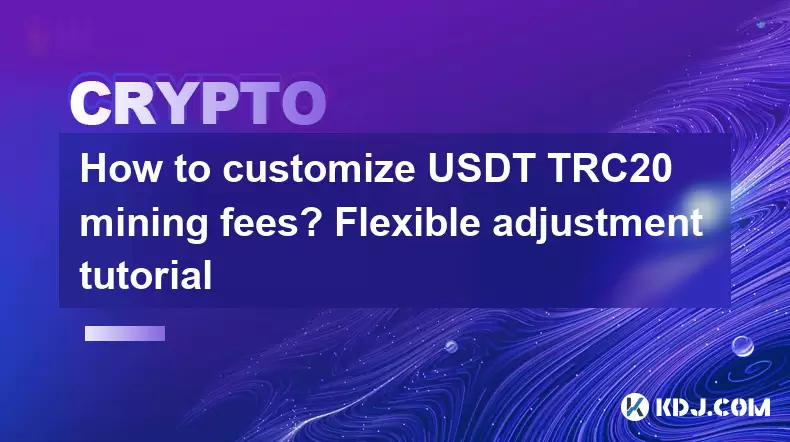
How to customize USDT TRC20 mining fees? Flexible adjustment tutorial
Jun 13,2025 at 01:42am
Understanding USDT TRC20 Mining FeesMining fees on the TRON (TRC20) network are essential for processing transactions. Unlike Bitcoin or Ethereum, where miners directly validate transactions, TRON uses a delegated proof-of-stake (DPoS) mechanism. However, users still need to pay bandwidth and energy fees, which are collectively referred to as 'mining fe...
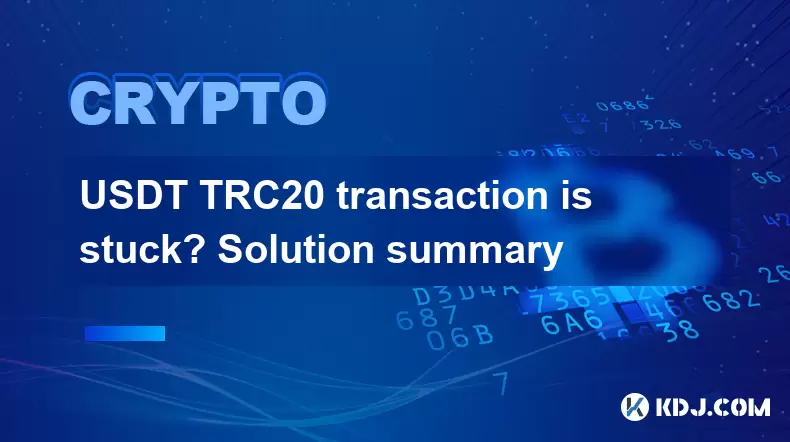
USDT TRC20 transaction is stuck? Solution summary
Jun 14,2025 at 11:15pm
Understanding USDT TRC20 TransactionsWhen users mention that a USDT TRC20 transaction is stuck, they typically refer to a situation where the transfer of Tether (USDT) on the TRON blockchain has not been confirmed for an extended period. This issue may arise due to various reasons such as network congestion, insufficient transaction fees, or wallet-rela...
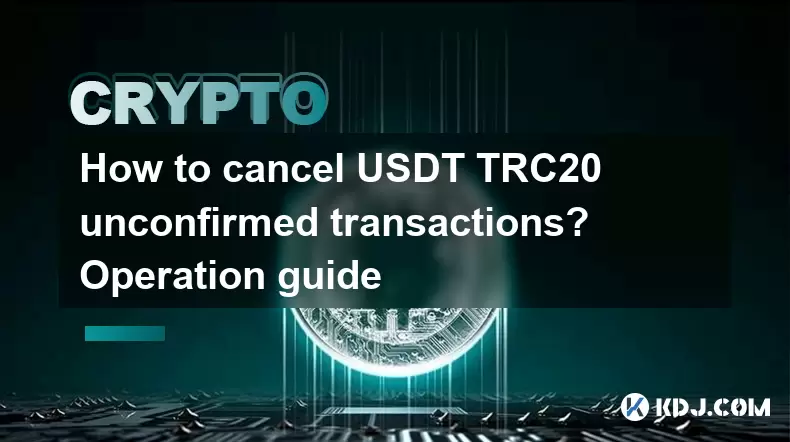
How to cancel USDT TRC20 unconfirmed transactions? Operation guide
Jun 13,2025 at 11:01pm
Understanding USDT TRC20 Unconfirmed TransactionsWhen dealing with USDT TRC20 transactions, it’s crucial to understand what an unconfirmed transaction means. An unconfirmed transaction is one that has been broadcasted to the blockchain network but hasn’t yet been included in a block. This typically occurs due to low transaction fees or network congestio...
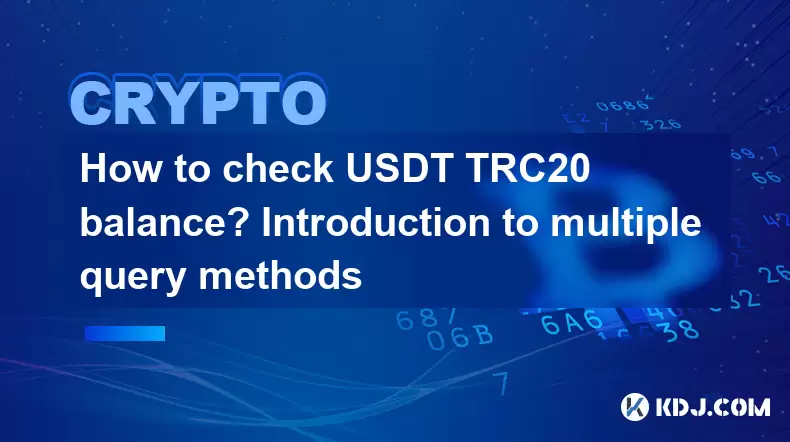
How to check USDT TRC20 balance? Introduction to multiple query methods
Jun 21,2025 at 02:42am
Understanding USDT TRC20 and Its ImportanceUSDT (Tether) is one of the most widely used stablecoins in the cryptocurrency market. It exists on multiple blockchain networks, including TRC20, which operates on the Tron (TRX) network. Checking your USDT TRC20 balance accurately is crucial for users who hold or transact with this asset. Whether you're sendi...
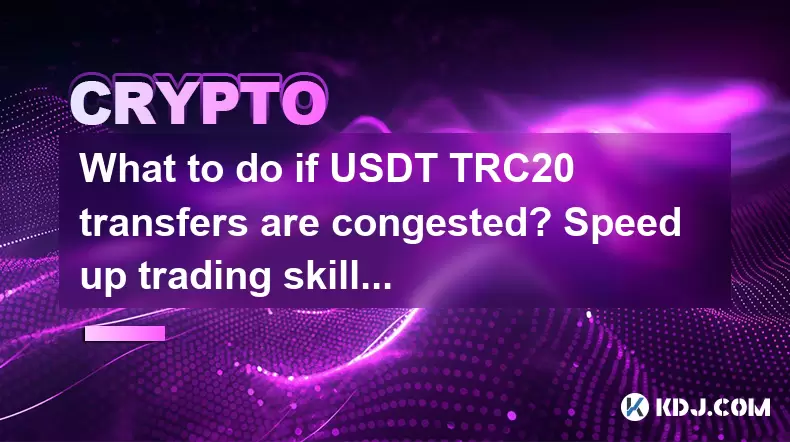
What to do if USDT TRC20 transfers are congested? Speed up trading skills
Jun 13,2025 at 09:56am
Understanding USDT TRC20 Transfer CongestionWhen transferring USDT TRC20, users may occasionally experience delays or congestion. This typically occurs due to network overload on the TRON blockchain, which hosts the TRC20 version of Tether. Unlike the ERC20 variant (which runs on Ethereum), TRC20 transactions are generally faster and cheaper, but during...
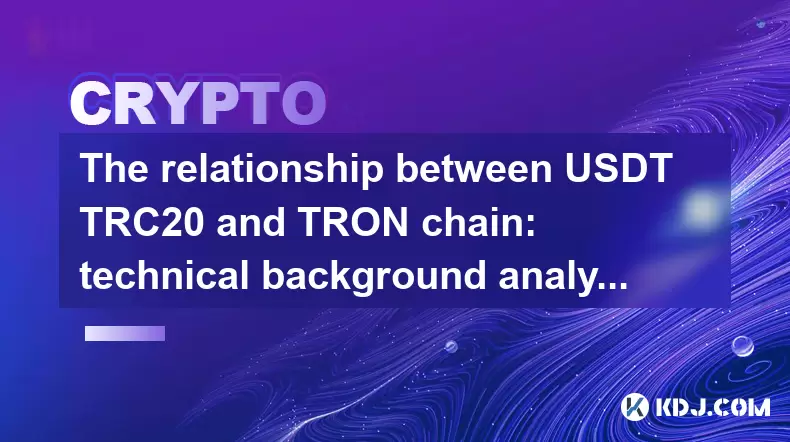
The relationship between USDT TRC20 and TRON chain: technical background analysis
Jun 12,2025 at 01:28pm
What is USDT TRC20?USDT TRC20 refers to the Tether (USDT) token issued on the TRON blockchain using the TRC-20 standard. Unlike the more commonly known ERC-20 version of USDT (which runs on Ethereum), the TRC-20 variant leverages the TRON network's infrastructure for faster and cheaper transactions. The emergence of this version came as part of Tether’s...

How to customize USDT TRC20 mining fees? Flexible adjustment tutorial
Jun 13,2025 at 01:42am
Understanding USDT TRC20 Mining FeesMining fees on the TRON (TRC20) network are essential for processing transactions. Unlike Bitcoin or Ethereum, where miners directly validate transactions, TRON uses a delegated proof-of-stake (DPoS) mechanism. However, users still need to pay bandwidth and energy fees, which are collectively referred to as 'mining fe...

USDT TRC20 transaction is stuck? Solution summary
Jun 14,2025 at 11:15pm
Understanding USDT TRC20 TransactionsWhen users mention that a USDT TRC20 transaction is stuck, they typically refer to a situation where the transfer of Tether (USDT) on the TRON blockchain has not been confirmed for an extended period. This issue may arise due to various reasons such as network congestion, insufficient transaction fees, or wallet-rela...

How to cancel USDT TRC20 unconfirmed transactions? Operation guide
Jun 13,2025 at 11:01pm
Understanding USDT TRC20 Unconfirmed TransactionsWhen dealing with USDT TRC20 transactions, it’s crucial to understand what an unconfirmed transaction means. An unconfirmed transaction is one that has been broadcasted to the blockchain network but hasn’t yet been included in a block. This typically occurs due to low transaction fees or network congestio...

How to check USDT TRC20 balance? Introduction to multiple query methods
Jun 21,2025 at 02:42am
Understanding USDT TRC20 and Its ImportanceUSDT (Tether) is one of the most widely used stablecoins in the cryptocurrency market. It exists on multiple blockchain networks, including TRC20, which operates on the Tron (TRX) network. Checking your USDT TRC20 balance accurately is crucial for users who hold or transact with this asset. Whether you're sendi...

What to do if USDT TRC20 transfers are congested? Speed up trading skills
Jun 13,2025 at 09:56am
Understanding USDT TRC20 Transfer CongestionWhen transferring USDT TRC20, users may occasionally experience delays or congestion. This typically occurs due to network overload on the TRON blockchain, which hosts the TRC20 version of Tether. Unlike the ERC20 variant (which runs on Ethereum), TRC20 transactions are generally faster and cheaper, but during...

The relationship between USDT TRC20 and TRON chain: technical background analysis
Jun 12,2025 at 01:28pm
What is USDT TRC20?USDT TRC20 refers to the Tether (USDT) token issued on the TRON blockchain using the TRC-20 standard. Unlike the more commonly known ERC-20 version of USDT (which runs on Ethereum), the TRC-20 variant leverages the TRON network's infrastructure for faster and cheaper transactions. The emergence of this version came as part of Tether’s...
See all articles





















